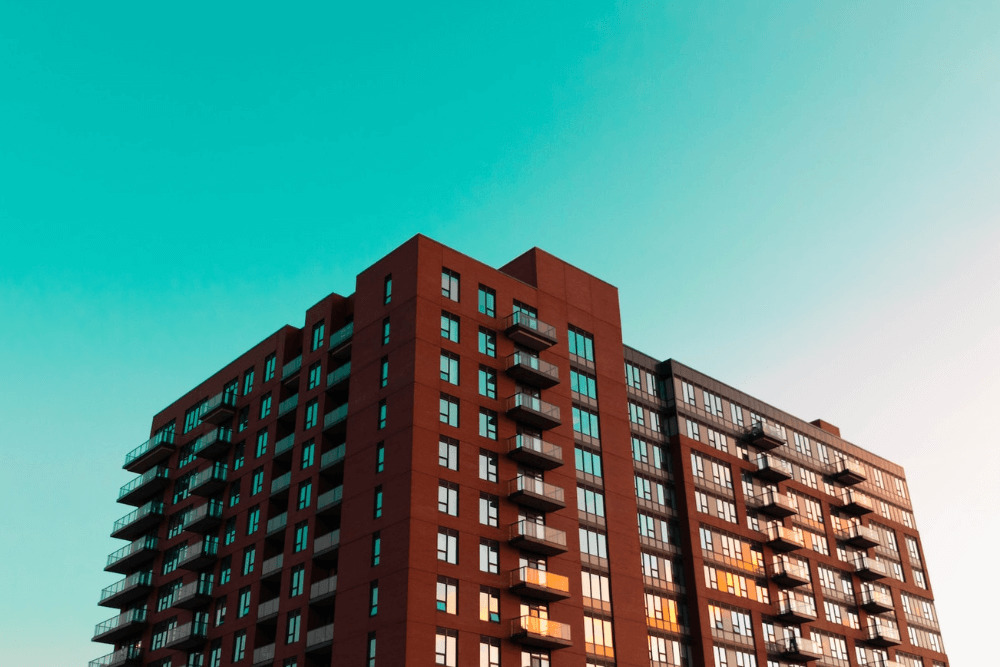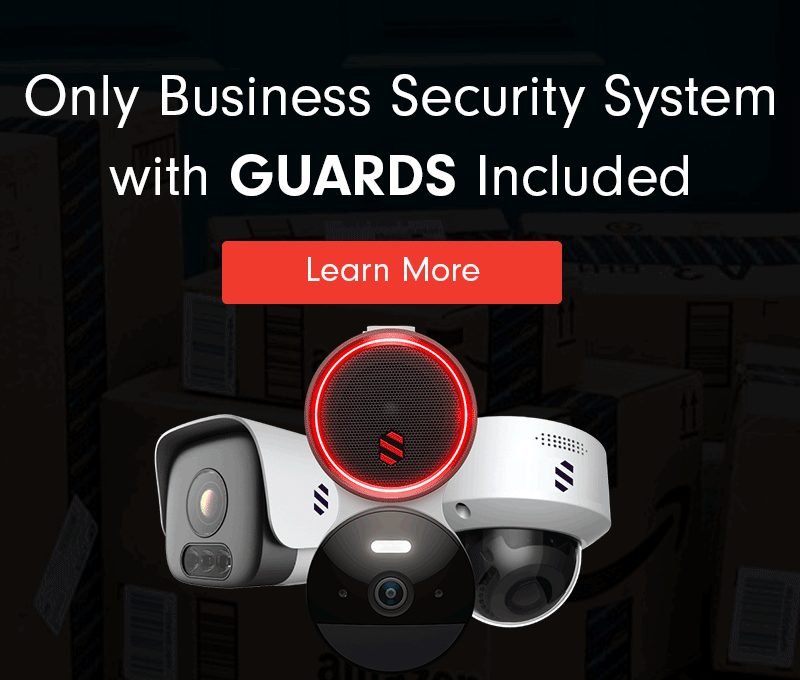Basic Multi-Family Residential Security

Just like a house, apartments and condominiums need to be protected. Studies show that those renting a property are victims of burglary more often than property owners. In fact, they’re a full 50% more likely to be hit. And burglary isn’t the only problem—vandalism, loitering, and plain old gate hopping are also security concerns. Whether you’re a tenant or a property owner, multi-family residential security needs to be a priority.
Let’s look at multi-tenant security from both sides: how tenants can secure their units and how property owners can secure the entire complex. A quick note: throughout this guide, we’ll mostly use language related to apartments, but most of it applies to condominiums, too.
Security Tips for Apartment Residents and Condo Owners
As a tenant, you should learn how to secure an apartment or condo unit against intruders. There are a few things you can do to secure your unit, and a smart security plan combines many of these measures. Safety tips for apartment residents include:
- Ensure the previous tenant returned all keys
- If possible, get the locks re-keyed
- Ask for a deadbolt to be installed if you don’t already have one
- Buzz in only people you know or expected deliveries
- Purchase renter’s insurance to protect your belongings and liability
- Invest in an apartment-friendly portable security system
- Reinforce your door in whatever ways your lease permits
- Always, always, always lock your windows and doors, especially if you’re on the first floor
- Don’t forget to secure the sliding glass door if you have a balcony or backyard area
- Use curtains or blinds to keep prying eyes from looking in street-facing windows
- Talk to your landlord or HOA about the security measures in place for the building itself (and share this article!)
And as a reminder, would-be burglars prefer ground-floor entry points for obvious reasons, so look into tips for first-floor apartment security if that’s where you live. Also, sliding doors are a common point of entry because people often forget to lock them.
But multi-family residential property security doesn’t stop with the residents.
Multi-Family Residential Security for Property Managers
As an owner, landlord, superintendent, or chair of the HOA, building security is your responsibility. Tenants and residents expect a certain level of protection with the rent they pay.
Fail them on that front, and your property will quickly develop a reputation as an unsafe option that’s best avoided. You won’t be able to attract ideal tenants—if you can attract any at all—and that impacts your bottom line. Invest in multi-family residential security measures now, or pay the consequences later.
But what kind of apartment complex security tips are out there? What should you be doing? And where can you turn for help?
Basic Multi-Family Residential Security Tips
Apartment complex security isn’t all that different from home security. Basics that apply to houses will frequently apply to multi-story apartment buildings, too. Obviously, the size and scope of the solutions will be much bigger, but good security practices are good security practices.
Large complexes with 10 or more units are far less likely to be targeted than those with only 2-9 units, according to the Bureau of Justice Statistics. The smaller the complex—and the fewer people around—the easier it is for someone to slip in and out unnoticed.
But that doesn’t mean you can afford to leave larger complexes vulnerable.
Conduct a Security Risk Assessment
It’s hard to mitigate risks without knowing which ones exist. So as a starting point, perform a security risk assessment of the property, ideally with a professional third-party service. This risk assessment will:
- Identify hazards
- Assess the risks
- Control the risks
- Record the findings
- Review the controls
An assessment should closely examine the building, the property, and the outermost perimeter, as well as any threats, risks, or vulnerabilities that could negatively impact the safety of residents. It should look at assets to be protected—including tenants and their units, of course, but also onsite office equipment, electronics, and other valuable items in common areas—through a crime prevention through environmental design (CPTED) lens.
CPTED is a philosophy that encourages deliberate design elements to reduce or eliminate criminal behavior before it happens. It includes five pillars:
- Natural surveillance: Increase the chances of an intruder being seen
- Natural access control: Reduce the chances an intruder will enter the property
- Territorial reinforcement: Make it clear that someone owns the property
- Activity support: Encourage legitimate use of the property by the appropriate people
- Maintenance: Keep the property in good shape, warning intruders that you pay attention to the premises
Additionally, your assessment will look at lighting, camera systems (if any), signage, security personnel (if any), crime statistics for the area, past incidents (if any), and more.
Create a Security Plan
Based on the findings from the security assessment, the next step is to draft a comprehensive security plan. This should be a document—either physical or digital—available to all stakeholders and residents.
It should explicitly state security steps taken, security procedures and checklists, resident responsibilities, mail and package delivery practices, fire and safety systems, CCTV coverage areas, contact details for relevant individuals, incident reporting procedures, and so on. If it has anything to do with the security of the building and its inhabitants, it should be in your plan.
Putting Apartment Complex Security Into Action
Once you have assessed and created your security plan, it’s time to take proactive steps and implement the solutions identified in it. These are some of the most common multi-family residential security measures, but there are of course many others.
Improve Lighting
Criminals covet the cover of darkness. Dark corners in the parking lot or stairwells, dark hiding spots on the property, and insufficient lighting near the doors are all an invitation to would-be criminals. Take it away from them.
Proper lighting on the property and in the common areas—especially isolated locations like a parking garage—can immediately reduce criminal behavior. Install always-on floodlights in high-traffic areas and install motion-activated lights in lesser-used corridors and spaces.
Light is an extremely cost-effective crime deterrent.
Install or Tighten Access Control
Most multi-family residential properties have some sort of access control at the points of entry. And if not, they should.
Keys, keypads, or keycards for entry doors are a must. Likewise, keycards or codes for the elevator can restrict access to higher floors. But don’t forget about other off-the-radar entry points like a loading dock, package room, or move-in space. You’ll also need locks for storage areas and maintenance rooms.
Smart locks and mobile apps are a modern and convenient way to not only control access but also keep a detailed log of who went where in the building. This is a great help in the event of theft, vandalism, or other crime.
If it’s in your budget, a doorman or woman—or a third-party cyber doorman—can be a great help. This person can accept deliveries, log in visitors, and keep an eye on the property and lobby.
If that’s not a viable option, an intercom system allows residents to buzz in guests and deliveries. Encourage your residents to allow someone access only when they expected the visitor. If your intercom system includes a camera so that they can see who is trying to gain access, even better. A recording feature is also helpful for investigating past issues.
Foster a Sense of Community
It’s far too easy for residents to live in isolation in an apartment complex. Anything you can do to reverse that trend is well worth the time and investment. Resident parties, barbeques, viewing parties, outings, special events, newsletters, and more create a community from what was once just a collection of individuals.
When everyone knows everyone else, it’s easy to spot strangers lingering around. Neighbors can keep an eye on units when they know the inhabitant is away on vacation. And most importantly, people are motivated and more likely to help or report suspicious characters and behavior if they feel like they belong to a community.
Spend a little to foster that sense of belonging however you can, and criminals are starting at a serious disadvantage.
Take Care of the Property
If a property looks cared for, people tend to treat it that way. It sends a clear message to criminals that someone is invested in the space and will defend it from intruders.
To that end, remove garbage from the property and shared spaces, scrub away graffiti, replace dead lightbulbs, fix broken windows and doors, post warnings about loitering or restricted areas, and generally ensure that maintenance is a priority. And encourage residents to take care of their units, inside and out. As a bonus, a well-maintained property attracts tenants.
Install a Security System
The simple fact is that a building is 300% more likely to be targeted without a security system. Any security devices or systems give an intruder reason to pause. And there are lots of options to choose from.
Window and door sensors on the ground floor protect against someone quietly slipping in. Glass break sensors help catch the most brazen burglars. Keypad access panels for maintenance rooms or site offices combat unauthorized access. Motion detectors alert personnel when someone is in a restricted area.
And cameras can deter crime with their mere presence.
Install Security Cameras
In a survey of 500 convicted burglars, 37% said the presence of a security camera would stop them from attempting a break-in. And even if it doesn’t stop intruders, it will capture incriminating footage. Win-win.
You should install cameras in various locations in and around the property, including but not limited to:
- Front door
- Parking lot or garage
- Service entrances
- Storage locker room
- Bike storage
- Package or mail room
- Outdoor amenities like a playground, pool, or barbeque pit
- Lobby
- Party room
- Games room
Make sure you check your local surveillance camera laws to confirm that you’re in compliance. Inform residents of camera locations, hang signage in those areas, and get the best cameras you can afford.
Security cameras can protect against vandalism, burglary, loitering, package theft, violent behavior, auto theft, harassment, suspicious behavior, and more. If you don’t already have security cameras for your property, get them. And if you do, consider upgrading.
Security Cameras the Deep Sentinel Way
Any camera is better than no camera. But that doesn’t mean all cameras and service providers are created equal.
A traditional camera will capture footage of a crime. That’s better than nothing. It will help after the fact. A Deep Sentinel camera, however, actively prevents crime before it happens. How? By raising the bar and setting a new industry standard.
When Deep Sentinel cameras detect motion, they stream footage within 2 seconds. Artificial intelligence determines what to ignore—a passing car, stray dog, or other benign entity—and what to alert live security guards about. In other words, this system is an ultra-smart threat detector. LiveSentinel guards then intervene via 2-way audio—alerting suspects to their presence—and notify authorities of a verified crime in progress if needed.
Predict. Prevent. Protect.
Zero false alarms. 30 seconds or less from camera activation to police involvement.
Deep Sentinel’s multi-family residential remote surveillance offers the best protection on the market for your building, your tenants, and your community. By design, the system differentiates between legitimate and unauthorized use and protects your residents while respecting their privacy.
So, how do you secure an apartment complex?
With Deep Sentinel.
Need a Solution that Prevents Crime?
Deep Sentinel is the only security technology that delivers the experience of a personal guard on every customer’s home and business. Visit deepsentinel.com/business or call 833-983-6006

